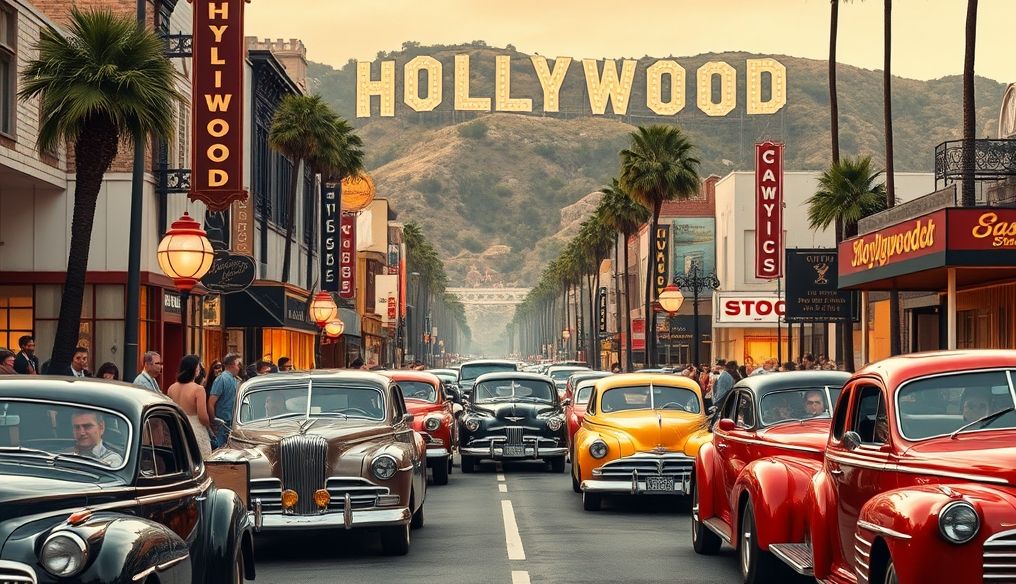How did Hollywood's film industry begin and evolve into a global power?
Hollywood, synonymous with the global film industry, wasn't always the dominant force it is today. Its journey began with a few small studios in the early 20th century, evolving into a global center for film production. This article explores Hollywood's humble beginnings, the factors that contributed to its growth, the challenges it faced, and how it became the cinematic powerhouse it is today.
Chapter 1: Humble Beginnings (1900-1910)
In the early 20th century, the film industry was in its infancy. New York and New Jersey were the primary centers for film production in the United States. However, producers soon began to look for alternative locations due to several factors:
- Land Costs: Land in New York and New Jersey was expensive.
- Weather: The weather in the East was unreliable, hindering outdoor filming.
- Patents: The Motion Picture Patents Company (MPPC), also known as "The Trust," controlled the film industry and charged high fees for the use of its equipment.
California, and specifically the Los Angeles area, offered an attractive alternative. Land was cheap, the weather was sunny year-round, and the location was far enough away to avoid the clutches of the MPPC.
Why Hollywood Specifically?
The choice of Hollywood was not random. The area offered a unique combination of advantages:
- Diverse Landscapes: Hollywood offered easy access to a variety of landscapes, from beaches to mountains to deserts, allowing filmmakers to shoot a wide range of films without having to travel far.
- Sunny Weather: The year-round sunny weather provided ideal filming conditions.
- Cheap Land: Land in Hollywood was much cheaper than land in New York and New Jersey.
In 1911, the first film studios moved to Hollywood, including David Horsley's Nestor Film Company. Other studios soon followed, marking the beginning of a new era in film production.
Chapter 2: Rapid Growth and Prosperity (1910-1930)
After the studios moved to Hollywood, the industry began to grow rapidly. New studios were built, and more actors, directors, and technicians were hired. Hollywood became a hub for cinematic innovation.
The Development of Feature Films
Initially, films were short and simple. However, as the industry grew, studios began to produce longer and more complex films. D.W. Griffith's "The Birth of a Nation" (1915) was a milestone, being the first feature-length film to achieve significant commercial success. Although controversial due to its racist portrayal, it demonstrated the potential of long-form narrative films.
The Star System
Studios quickly realized the value of stars. They began to promote actors and actresses as public figures, leading to the emergence of the "star system." Stars like Charlie Chaplin and Mary Pickford became household names, drawing audiences to theaters.
The Golden Age of Hollywood
The 1920s saw a significant boom in Hollywood. Lavish movie theaters were built, studios produced massive films, and Hollywood became synonymous with entertainment and luxury. This era was known as the "Golden Age of Hollywood."
Chapter 3: The Arrival of Sound (1927-1930)
In 1927, "The Jazz Singer" revolutionized the film industry. It was the first feature-length film to include synchronized dialogue. This marked the beginning of a new era in filmmaking, as sound became an integral part of the movie-going experience.
Challenges and Opportunities
The transition to sound was not easy. Studios had to invest in new equipment and train actors and actresses to speak on screen. However, sound also opened up new opportunities for creativity and innovation.
The Impact of the Great Depression
The arrival of sound coincided with the beginning of the Great Depression. The Depression affected the film industry, as attendance at movie theaters declined. However, Hollywood continued to produce films that provided escapism and entertainment for struggling audiences.
Chapter 4: The Studio System (1930-1948)
During the 1930s and 1940s, Hollywood was dominated by the "studio system." Major studios like MGM, Paramount, and Warner Bros. controlled all aspects of film production, from production to distribution to exhibition.
The Power of the Studios
The studios wielded immense power. They owned movie theaters, employed actors, directors, and technicians under long-term contracts, and controlled all aspects of film production. This system was highly efficient, as the studios produced a large number of high-quality films.
The Impact of World War II
Hollywood played an important role during World War II. Studios produced propaganda films to support the war effort, and provided entertainment for troops overseas.
Chapter 5: Post-War Challenges (1948-1960)
After World War II, Hollywood faced a number of challenges:
Supreme Court Ruling
In 1948, the Supreme Court ruled that the studio system was monopolistic. The studios were ordered to divest themselves of their movie theaters, leading to the collapse of the studio system.
The Rise of Television
Television became increasingly popular in the 1950s, leading to a decline in attendance at movie theaters. Hollywood had to adapt to this new threat.
The Blacklist
During the Cold War, many actors, directors, and writers were blacklisted because of their political views. The blacklist negatively impacted the film industry, as many talented individuals lost their jobs.
Chapter 6: New Hollywood (1960-1980)
In the 1960s and 1970s, Hollywood experienced a new era of creativity and innovation. This era was known as "New Hollywood."
The New Directors
A new generation of directors emerged, such as Francis Ford Coppola, Martin Scorsese, and Steven Spielberg, who brought new styles and techniques to filmmaking. These directors produced some of the most iconic films in cinematic history.
Independence and Innovation
Independent producers became more important, allowing for the production of more experimental and adventurous films. Films like "Easy Rider" (1969) and "The Godfather" (1972) were produced outside the traditional studio system and achieved great success.
Chapter 7: The Modern Era (1980-Present)
Hollywood has undergone significant changes since the 1980s.
Blockbuster Films
Blockbuster films, such as "Star Wars" (1977) and "Indiana Jones" (1981), became increasingly popular. Studios focused on producing films with massive budgets and high revenue potential.
Digital Technology
Digital technology has revolutionized the film industry. Digital special effects have allowed filmmakers to create stunning visuals that were not possible before. Digital technology has also made the editing and distribution process easier.
Globalization
Hollywood has become a global industry. Studios seek to appeal to audiences around the world, and produce films that cater to international tastes.
Chapter 8: Future Challenges
Hollywood faces a number of challenges in the future:
Streaming Services
Streaming services, such as Netflix and Amazon Prime Video, have become a major competitor to movie theaters. These services offer a wide range of films and television shows available on demand.
Piracy
Piracy remains a significant problem for the film industry. Consumers can illegally download films from the internet, reducing the revenue of the studios.
Diversity and Inclusion
There is a growing demand for diversity and inclusion in Hollywood. Films and television shows should reflect the diversity of society, and provide opportunities for people from all backgrounds.
Conclusion
Hollywood's journey from humble beginnings to a global power is a remarkable story. Hollywood has overcome many challenges, adapted to technological and social changes, and continues to produce films that entertain and inspire audiences around the world. The future of Hollywood is uncertain, but one thing is certain: the film industry will continue to evolve and innovate.




